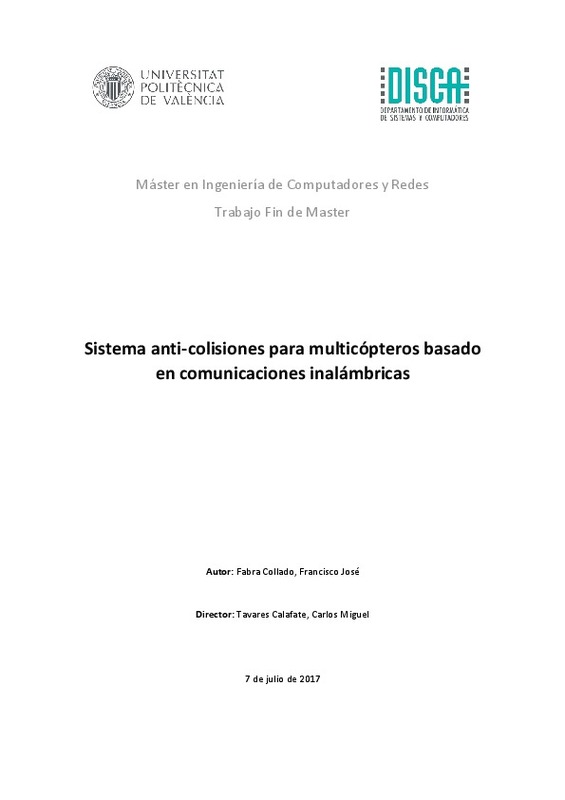JavaScript is disabled for your browser. Some features of this site may not work without it.
Buscar en RiuNet
Listar
Mi cuenta
Estadísticas
Ayuda RiuNet
Admin. UPV
Sistema anti-colisiones para multicópteros basado en comunicaciones inalámbricas
Mostrar el registro completo del ítem
Fabra Collado, FJ. (2017). Sistema anti-colisiones para multicópteros basado en comunicaciones inalámbricas. Universitat Politècnica de València. http://hdl.handle.net/10251/86101
Por favor, use este identificador para citar o enlazar este ítem: http://hdl.handle.net/10251/86101
Ficheros en el ítem
Metadatos del ítem
| Título: | Sistema anti-colisiones para multicópteros basado en comunicaciones inalámbricas | |||
| Autor: | Fabra Collado, Francisco José | |||
| Director(es): | ||||
| Entidad UPV: |
|
|||
| Fecha acto/lectura: |
|
|||
| Resumen: |
[EN]
The use of multicopters is spreading rapidly due to their wide scope of application. This means that, as time goes by, the risk of collision between these devices significantly increases. Moreover, solutions where ...[+]
En este proyecto se propone desarrollar un protocolo anti-colisiones para drones. El protocolo se basa en comunicaciones inalámbricas ad-hoc entre los drones para que éstos puedan intercambiar periódicamente su ubicación ...[+]
|
|||
| Palabras clave: |
|
|||
| Derechos de uso: | Reconocimiento - No comercial (by-nc) | |||
| Editorial: |
|
|||
| Titulación: |
|
|||
| Tipo: |
|







